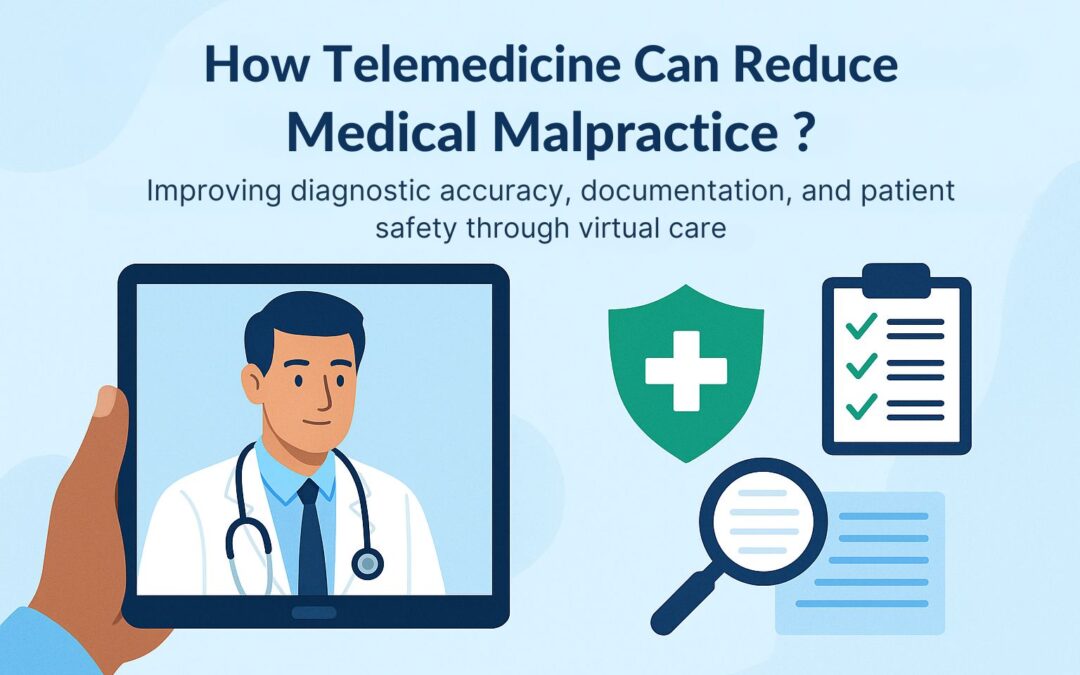Dr. Shariq Khoja
Telemedicine is known to empower health workers in rural areas to provide specialized health services in areas where the physical access to specialist medical care is not available. While the use of technology fills the vacuum of quality healthcare in hard to reach areas, there is also a chance of wrongful or unauthorized use of these technologies, risking the quality of health services in such areas. Risks of Medical Malpractice associated with telemedicine are highlighted below:
Telemedicine reducing Medical Malpractice: In many parts of the world, communities rely on the services of untrained or minimally trained health workers for all kinds of health problems, which at times allows these workers to treat the problems with their knowledge. Also, lack of supervision and support available to these providers, provides them more room for experimentation, which creates risks for the patients and their communities. Telemedicine is known to not only connect the specialists with remote health providers for providing new and better quality health services, but also enhance the supervision of health workers to ensure quality care for the population.
Risks of Medical Malpractice by using Telemedicine
Telemedicine could increase the potential for malpractice if not managed properly. Some potential risks for increased malpractice include:
- Misdiagnosis and Errors: Telemedicine consultations can sometimes be more challenging than in-person visits, potentially leading to misdiagnosis or missed important information.
- Technical Issues: Data breaches, privacy violations, and communication breakdowns can occur with telemedicine, increasing the risk of harm.
- Patient-Specific Challenges: Some patients may struggle with the technology or have difficulty explaining their symptoms effectively, impacting the quality of care.
- Lack of Physical Examination: The inability to physically examine a patient can limit a provider’s ability to accurately diagnose and assess a patient’s condition.
How to minimize the risks of Medical Malpractice through Telemedicine
Minimizing the risk of medical malpractice through telemedicine requires focus on robust technology, clear communication, proper documentation, and appropriate patient selection. Following specific measures could reduce the risks of malpractice:
- Robust Technology: Using secure, HIPAA-compliant platforms can protect patient privacy and ensure data integrity.
- Better networks and Clear Communication: Maintaining open and transparent communication with patients about the potential limitations of telemedicine is crucial.
- Thorough Documentation: Detailed records of all consultations, including any limitations or challenges encountered, are essential.
- Training and Expertise: Providers should be adequately trained in the use of telemedicine technologies and the nuances of virtual care to ensure high-quality patient safety.
- Collaboration and Referral: Telemedicine should be used as a supplement to in-person care, with clear guidelines for when patients need to be referred for in-person evaluation or treatment.
Conclusion:
While telemedicine can offer many benefits, it also presents unique challenges and potential risks for malpractice. By addressing these challenges proactively through the implementation of best practices and a focus on patient safety, providers can help ensure that telemedicine services are delivered effectively and ethically. Tech4Life’s Sojro telemedicine kits not only offer robust, secure and integrated technology platforms, but also work in low-bandwidth networks, reducing the risk of breaks in communication between the health providers and patients.

